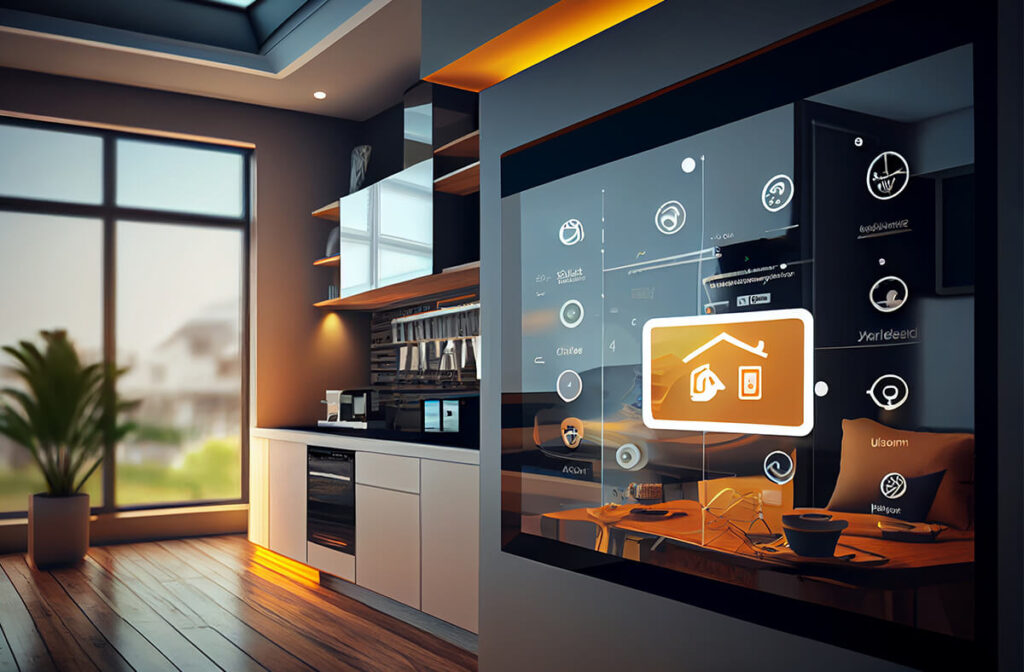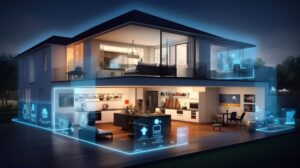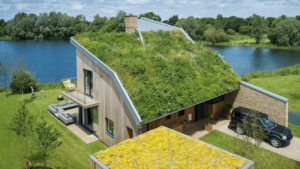Creating Harmony: The Art and Science of Integrating Smart Devices in Modern Home Design

Smart home technology has become an integral part of modern living, transforming houses into intelligent, interconnected spaces. The seamless integration of these devices not only enhances convenience but also elevates the aesthetic appeal of contemporary homes. In this article, we delve into the art and science behind incorporating smart devices into the design of modern homes, exploring the ways in which technology can be seamlessly woven into the fabric of our living spaces.
The Evolution of Home Automation

The journey of home automation is a fascinating exploration of technological evolution. From the early days of basic programmable thermostats to the current era of sophisticated smart ecosystems, homes have witnessed a remarkable transformation. Today, smart devices extend beyond mere functionality; they are design elements that contribute to the overall ambiance. The integration of voice-activated assistants, automated lighting, and climate control systems represents a shift from traditional to technologically advanced living spaces. If you’re a frequent traveler relying on airport chauffeur services in Seattle, envision a seamless transition from your smart home to the luxurious comfort of a chauffeured ride.
The art lies in finding a delicate balance between the aesthetic appeal of a home and the functionality offered by smart devices. Designers are increasingly challenged to incorporate these technological marvels seamlessly into the architecture, ensuring that they enhance rather than disrupt the visual harmony of a space.
Symbiosis of Design and Technology
Achieving harmony between design and technology requires a thoughtful approach. Designers are now blending traditional design principles with cutting-edge technology to create homes that are both visually stunning and functionally efficient. For instance, the strategic placement of smart mirrors that display real-time weather updates or act as interactive interfaces adds a futuristic touch without compromising the elegance of the space. If pests pose a challenge to your smart home utopia, commercial pest control in Reno can be a vital component in safeguarding the integrity of your automated systems and preserving the comfort of your living environment.
The science behind this integration involves understanding the capabilities and limitations of each smart device. Architects and designers collaborate to ensure that the wiring, connectivity, and infrastructure needed for these devices are seamlessly embedded during the construction phase. This proactive approach not only enhances the aesthetic value of the home but also future-proofs it for upcoming technological advancements.
Personalization and User Experience
One of the key challenges in integrating smart devices is personalization. Homes are as unique as their occupants, and a one-size-fits-all approach often falls short. The art of personalization lies in understanding the user’s lifestyle and preferences. Designers must consider the daily routines, preferences, and habits of the residents to create a bespoke smart home experience. As you delve into the possibilities of home automation, consider the transformative impact of incorporating iron front doors equipped with advanced access control systems.
The science comes into play when configuring smart systems to adapt and learn from user behavior. Artificial intelligence algorithms analyze data from sensors and user interactions to anticipate needs and automate processes. The result is an intuitive and personalized environment where smart devices seamlessly align with the user’s rhythm, enhancing comfort and efficiency.
Challenges and Future Trends
While the integration of smart devices into home design brings unprecedented benefits, it is not without its challenges. The diverse ecosystem of smart devices often requires different communication protocols, posing a compatibility challenge. Designers must navigate through this complexity, ensuring that the devices work cohesively to provide a unified experience.
Beyond controlling your thermostat or lights with a voice command, consider the impact of advanced car audio lithium batteries on your driving experience. These batteries, designed with the latest technology, elevate your car audio system to new heights.
Looking ahead, the future of smart home design holds exciting possibilities. Advancements in materials science may lead to the development of surfaces that double as interactive displays, blurring the lines between traditional architecture and technology. The integration of augmented reality in home design applications could revolutionize the way homeowners visualize and customize their living spaces, further enhancing the creative possibilities of smart home integration.
The Role of Sustainability in Smart Home Integration
Beyond the aesthetic and functional considerations, the integration of smart devices into modern home design also opens up avenues for sustainable living. The art of sustainable design lies in harnessing the capabilities of smart technology to minimize environmental impact. Smart homes can be equipped with sensors that monitor energy consumption, optimizing the use of resources to reduce waste and promote energy efficiency. Through animation classes, you can gain the expertise to design custom interfaces, create engaging visuals for smart displays, and even develop interactive elements within your home automation system.
The science of sustainability involves the implementation of renewable energy sources and eco-friendly materials. Imagine a smart home where the roof is not just a protective cover but also a solar panel that harnesses sunlight to power the entire house. Smart windows could adjust tint based on sunlight intensity, maximizing natural light while minimizing the need for artificial lighting. These innovations not only contribute to a greener planet but also redefine the very essence of modern living.
Wellness and the Smart Home Ecosystem

The next frontier in smart home design is the integration of wellness-centric technologies. The art of promoting well-being through design involves creating spaces that cater to the physical and mental health of the inhabitants. Picture a bedroom equipped with smart lighting that mimics natural circadian rhythms, promoting better sleep and wake cycles. In the bathroom, smart mirrors could incorporate health monitoring features, providing real-time feedback on vital signs.
The science of wellness-centric design explores the synergy between smart devices and human biology. Biometric sensors could be seamlessly integrated into furniture and fixtures, allowing the home to adapt to the health needs of its residents. Smart homes could become proactive in promoting health, offering reminders for hydration, encouraging physical activity, and even adjusting environmental factors to create a conducive atmosphere for relaxation and stress relief. Whether you’re controlling your home’s devices through voice commands or remotely managing systems, integrating smart home technology with essential healthcare services like IV therapy in Nolensville TN creates a holistic approach to modern living, emphasizing both convenience and well-being.
Security Reinvented: A Technological Fortress
As smart homes evolve, so does the need for advanced security measures. The art of integrating security features into home design involves creating a fortress that is both impenetrable and unobtrusive. Imagine a smart door equipped with facial recognition technology, granting access only to recognized individuals. Smart cameras with artificial intelligence could analyze potential threats and alert homeowners in real time, offering a new level of peace of mind.
The science behind this security integration encompasses advanced algorithms that can distinguish between normal household activities and suspicious behavior. Machine learning enables smart security systems to adapt and learn, providing a proactive defense against potential threats. The integration of blockchain technology could further enhance the security of smart homes, creating an incorruptible ledger of access and activity. To achieve the full modernization of your smart home, essential additions include items such as a 12×24 pool cover, ensuring the protection of your pool against debris and serving as a safeguard for your car during snowy periods, especially if you lack a garage.
The Ethical Dimension of Smart Home Design
As the capabilities of smart devices expand, so does the ethical responsibility of designers and homeowners. The art of ethical smart home design involves striking a balance between innovation and privacy. Designers must consider the ethical implications of data collection and usage, ensuring that user information is protected and used responsibly.
The science behind ethical smart home design includes robust encryption protocols and transparent data policies. Homeowners should have control over what data is collected and how it is used. As smart devices become more interconnected, addressing issues of cybersecurity and data privacy becomes paramount. The future of smart home design hinges not only on technological advancements but also on ethical considerations that prioritize the rights and privacy of individuals.
The Collaborative Future: Architects, Designers, and Technologists Unite
Looking forward, the collaborative efforts of architects, designers, and technologists will play a pivotal role in shaping the future of smart home integration. The art of collaboration involves breaking down traditional silos and fostering interdisciplinary teamwork. Architects and designers need to work hand-in-hand with technologists to ensure that the aesthetics and functionality of smart homes are seamlessly intertwined. As you navigate the intricacies of home automation, consider the soft embrace of plush robes for women as a delightful addition to your smart living space.
The science of collaboration lies in creating open communication channels between professionals in different fields. Cross-disciplinary research and development can lead to innovations that push the boundaries of what is currently possible. Imagine a future where architects, designers, and technologists come together to brainstorm and create homes that not only meet the needs of today but also anticipate the challenges and desires of tomorrow.
Empowering Homeowners: The DIY Revolution

As smart home technology becomes more accessible, homeowners are increasingly taking the reins in customizing their living spaces. The art of empowerment involves providing homeowners with user-friendly interfaces and tools that allow them to personalize their smart home experience. Picture a scenario where homeowners can easily reprogram smart devices, rearrange automation sequences, and customize settings to match their evolving preferences.
The science behind this DIY revolution includes intuitive app interfaces and user-friendly programming languages. Homeowners can become the architects of their living spaces, experimenting with different configurations to find the perfect blend of technology and design. This shift toward user empowerment not only democratizes smart home technology but also fosters a sense of ownership and connection between residents and their intelligent living spaces. Business advisory experts can provide invaluable insights into how integrating smart home technology aligns with your financial objectives.
Global Connectivity: Smart Homes in the Smart Cities of Tomorrow
The future of smart home design extends beyond individual dwellings to encompass entire smart cities. The art of global connectivity involves creating an intricate web where smart homes seamlessly interact with the urban landscape. Imagine a city where traffic signals communicate with smart cars and public spaces adjust their lighting and ambiance based on real-time data from the surrounding environment.
The science of smart city integration involves a complex network of sensors, communication protocols, and artificial intelligence. Urban planners, architects, and technologists collaborate to create interconnected ecosystems that enhance the quality of life for city dwellers. As smart homes become integral components of smart cities, the potential for creating sustainable, efficient, and technologically advanced urban environments becomes a reality.
As you embrace the convenience of voice-controlled assistants, automated thermostats, and security systems that respond to your every need, it’s the millimeter wave circulators that enable this seamless interaction.
In conclusion, the journey of integrating smart devices into modern home design is an ever-evolving exploration of creativity, technology, and ethical considerations. From sustainability and wellness to security and global connectivity, the possibilities are vast and exciting. As we navigate the uncharted territories of the smart home landscape, the art and science of design and technology continue to converge, promising a future where our living spaces not only respond to our needs but also inspire us to imagine new possibilities for harmonious and intelligent living.




